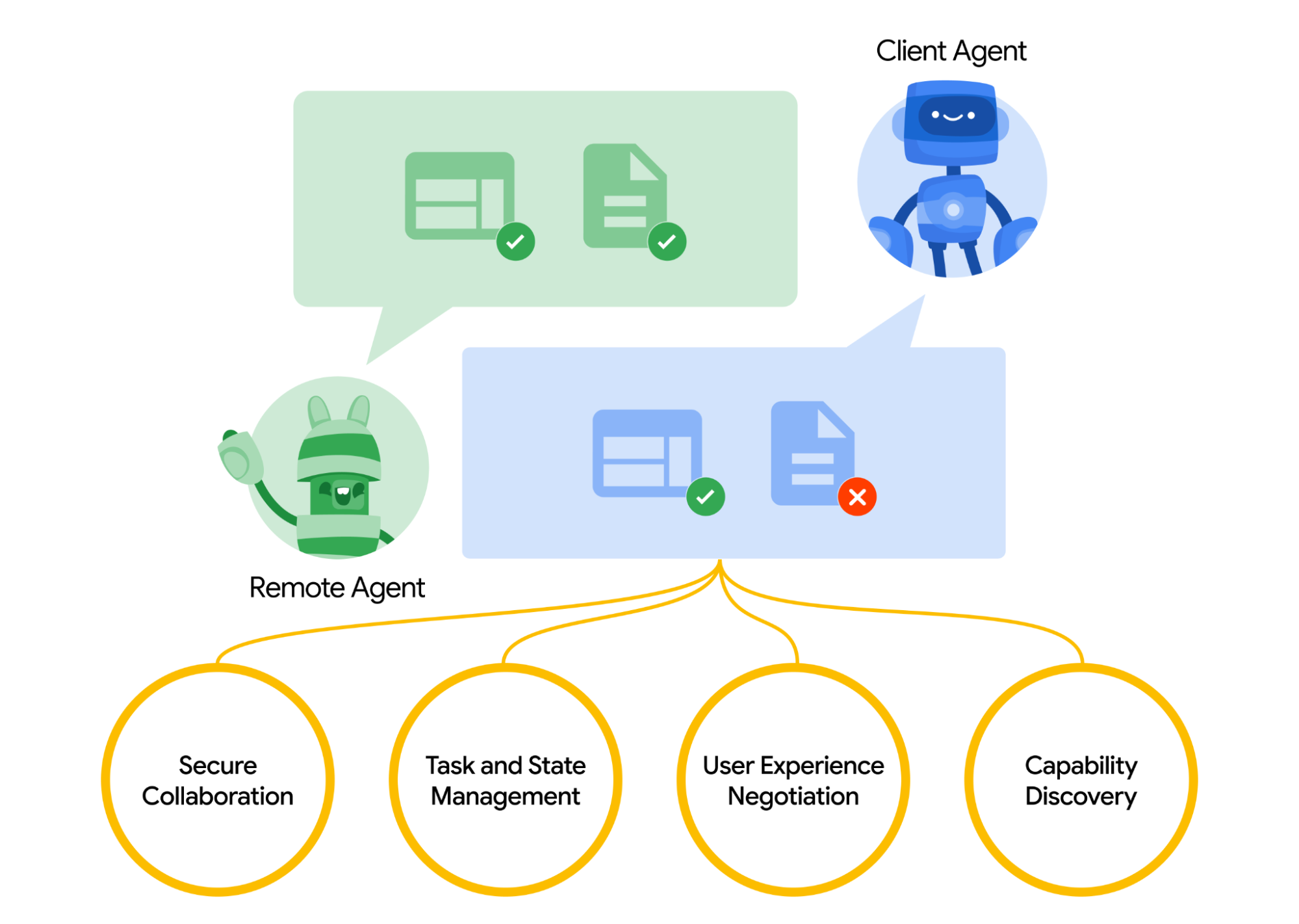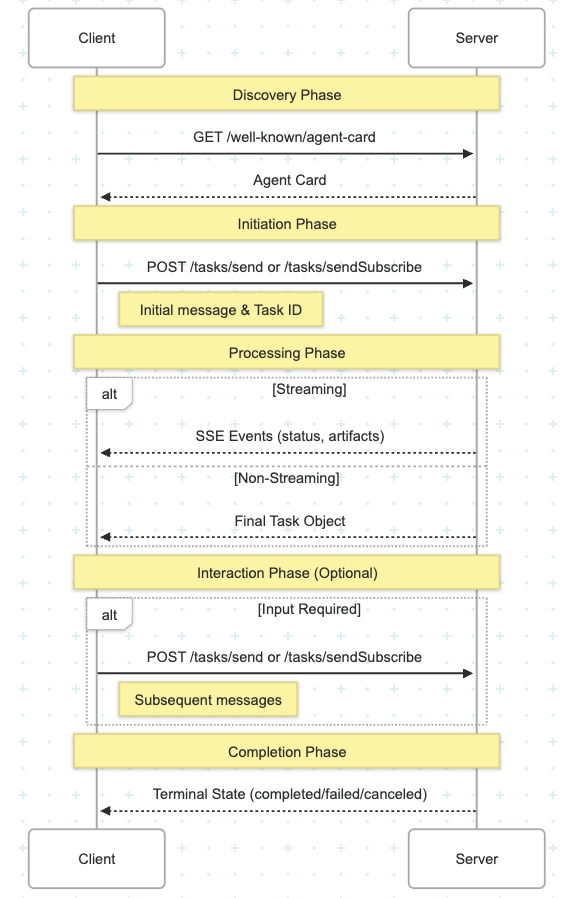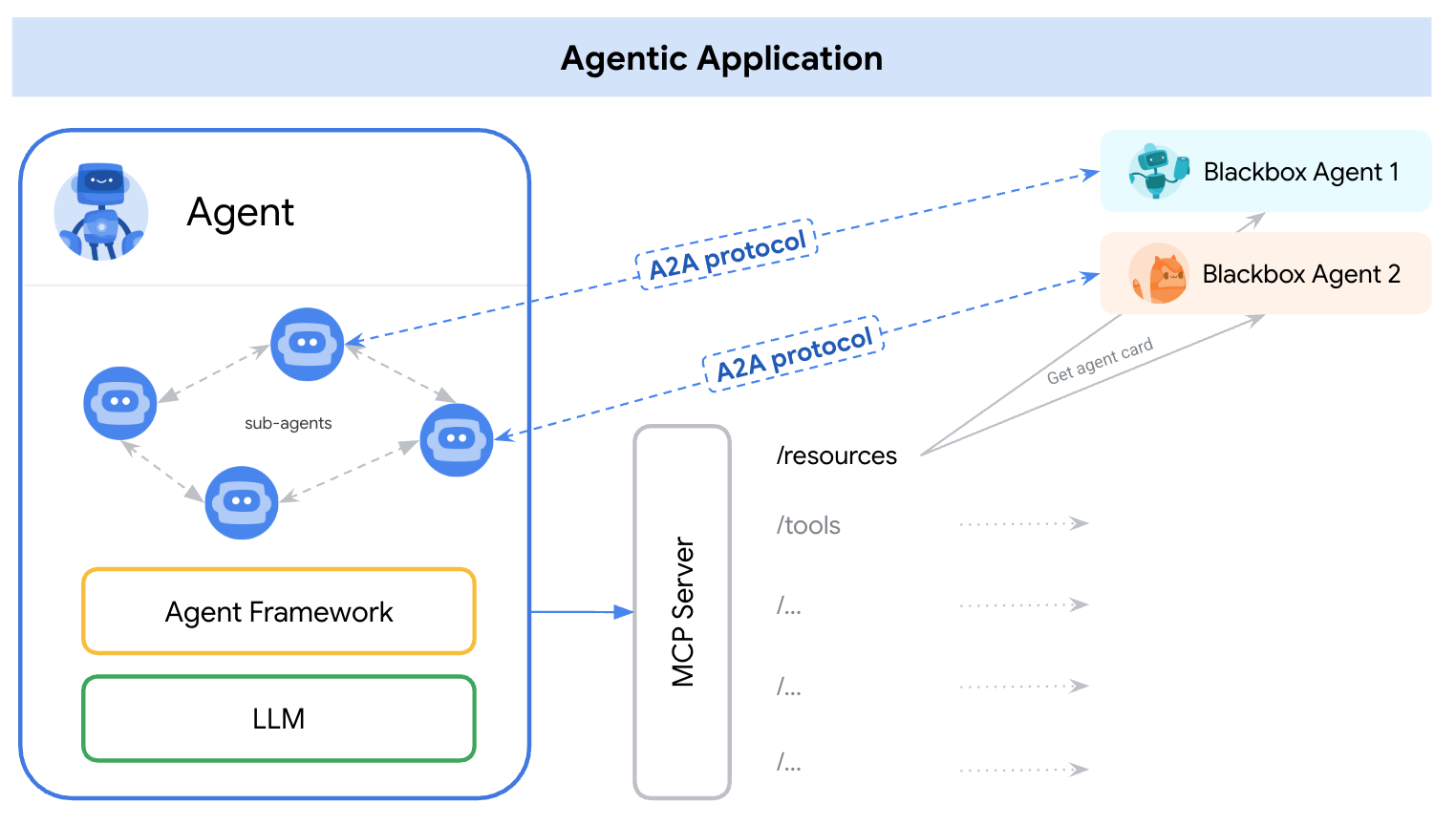Agent2Agent
Protocol
A new era of agent interoperability. Enable seamless collaboration between AI agents across different platforms and frameworks.
What is A2A Protocol?
A2A Protocol is an open standard that enables AI agents to communicate and collaborate across different platforms and frameworks, regardless of their underlying technologies. It's designed to maximize the benefits of agentic AI by enabling true multi-agent scenarios.
Universal Interoperability
Enables agents to work together seamlessly across different platforms and frameworks, regardless of their underlying technologies.
Enterprise-Grade Security
Built with enterprise-grade authentication and authorization, supporting OpenAPI's authentication schemes.
Flexible & Scalable
Supports everything from quick tasks to long-running research, with real-time feedback and state updates.
Key Features
A2A Protocol is designed with five key principles to enable effective agent collaboration
Open Standard
Built on existing standards including HTTP, SSE, and JSON-RPC for easy integration with existing IT stacks
Secure by Default
Enterprise-grade authentication and authorization with support for OpenAPI's authentication schemes
Multi-Modal Support
Supports various modalities including text, audio, and video streaming for comprehensive agent communication
Long-Running Tasks
Designed to support both quick tasks and deep research that may take hours or days to complete
Agent Collaboration
Enables true multi-agent scenarios where agents can collaborate in their natural, unstructured modalities
Real-Time Updates
Provides real-time feedback, notifications, and state updates throughout the task lifecycle
How A2A Works
A2A facilitates communication between a 'client' agent and a 'remote' agent through a structured process

Capability Discovery
Agents advertise their capabilities using an 'Agent Card' in JSON format, enabling other agents to identify the best agent for a task.
Task Management
Communication is oriented towards task completion, with a defined lifecycle that can be completed immediately or over time.
Collaboration
Agents can send messages to communicate context, replies, artifacts, or user instructions.
User Experience
Messages include 'parts' with specified content types, allowing agents to negotiate the correct format and UI capabilities.
Typical Flow
The A2A Protocol follows a well-defined flow for agent communication and task processing.

Discovery
Client fetches the Agent Card from the server's well-known URL.
Initiation
Client sends initial message with a unique Task ID.
Completion
Task reaches terminal state (completed/failed/canceled).
A2A ❤️ MCP
TLDR; Agentic applications needs both A2A and MCP. We recommend MCP for tools and A2A for agents.

Why Protocols?
- Standard protocols are essential for enabling agentic interoperability, particularly in connecting agents to external systems.
- Tools are primitives with structured inputs and outputs and (typically) well-known behavior.
- Agents are autonomous applications that can accomplish novel tasks by using tools, reasoning, and user interactions.
Complementary
- MCP is the emerging standard for connecting LLMs with data, resources, and tools.
- A2A is an application level protocol that enables agents to collaborate in their natural modalities.
Example
- Consider an auto repair shop that fixes cars.
- MCP connects agents with their structured tools.
- A2A enables ongoing communication and collaboration.
Built for Developers
Join over 50 technology partners including Atlassian, Box, Cohere, Intuit, Langchain, MongoDB, PayPal, Salesforce, SAP, ServiceNow, UKG, and Workday
Specification
Review the full A2A protocol specification and understand how to implement it in your systems.
View SpecificationCode Samples
Explore available code samples to understand the protocol's structure and experiment with its implementation.
View SamplesContribute
Help shape the future of agent interoperability by submitting ideas and contributing to the documentation.
Get InvolvedJoin the A2A Community
Be part of the movement to standardize agent interoperability and unlock the full potential of AI agents